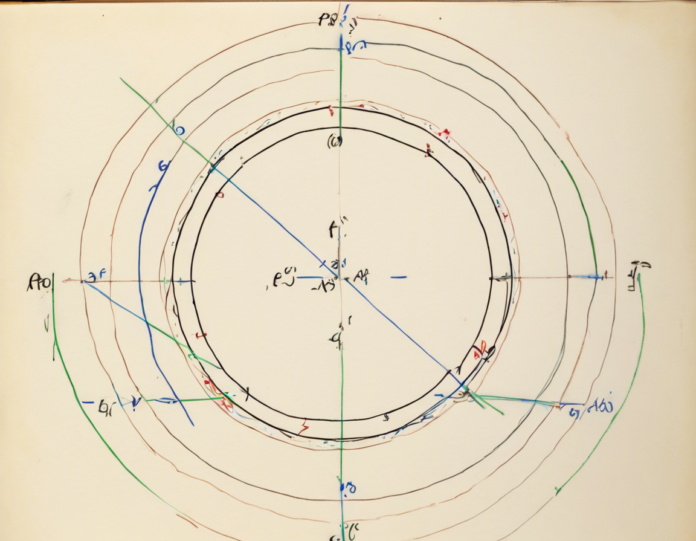Understanding the concept that tangents of a circle’s diameter are parallel is fundamental in the field of geometry. This fact holds significant importance not only in theoretical mathematics but also in practical applications in various fields such as engineering, architecture, and physics. In this comprehensive article, we will delve into the properties of circles, diameters, tangents, and parallel lines to establish a solid understanding of why tangents of a circle’s diameter are parallel.
Circles and Their Properties
A circle is a geometric shape consisting of all points in a plane that are at a given distance, called the radius, from a given point, called the center. The diameter of a circle is a straight line passing through the center of the circle and connecting two points on the circle’s circumference. It is also defined as twice the length of the radius.
Tangents to a Circle
A tangent to a circle is a straight line that intersects the circle at exactly one point, touching the circle at that point. Tangents are perpendicular to the radius at the point of contact, forming a right angle with the circle at that point. This property is crucial in understanding the relationship between tangents and diameters in circles.
The Theorem: Tangents of a Circle’s Diameter Are Parallel
The key theorem we are exploring in this article states that the tangents drawn to a circle from the endpoints of a diameter are parallel. This theorem is best understood through a step-by-step explanation:
-
Consider a Circle with a Diameter: Start by envisioning a circle with a diameter. Let’s label the center of the circle point O, with endpoints of the diameter being points A and B.
-
Draw Tangents: Draw tangents to the circle at points A and B, where the tangents intersect the circle. Let the points of tangency be C and D, respectively.
-
Triangle Formation: By connecting points A, B, and O, we form a triangle △ABO.
-
Right Angles: Recall that tangents are perpendicular to the radius at the point of contact. Therefore, ∠OAC = 90° and ∠OBD = 90°.
-
Proving Parallel Lines: To prove that AC is parallel to BD, we can use the property of alternate interior angles. Since ∠OAC = 90°, ∠OAB = 90° (as AB is a diameter). Similarly, ∠OBD = 90° implies ∠OBA = 90°. As ∠OAB = ∠OBA (both are right angles), we have ∠OAB = ∠OBA. By the properties of alternate interior angles, we conclude that the lines AC and BD are parallel.
Importance of the Theorem
Understanding why tangents of a circle’s diameter are parallel is crucial in various mathematical applications:
- Geometry: This theorem is foundational in the study of circles and their properties, aiding in the derivation of other geometric theorems.
- Engineering: In structural engineering and design, the concept of tangents to a circle’s diameter being parallel is utilized in the construction of bridges, arches, and other architectural elements.
- Physics: Principles of optics, such as reflection and refraction of light, rely on the knowledge of how tangents interact with circles.
Practical Applications
The concept of tangents of a circle’s diameter being parallel finds application in real-world scenarios:
- Road Design: In civil engineering, understanding this theorem helps in designing smooth curves and intersections on roads.
- Architectural Layouts: Architects use this principle to create aesthetically pleasing designs with curved elements.
- Optical Devices: Manufacturers of optical devices like cameras and lenses apply this theorem in the design and alignment of lenses for optimal performance.
FAQs
- Why are tangents of a circle’s diameter parallel?
-
Tangents to a circle are perpendicular to the radius at the point of contact. Since the diameter passes through the center of the circle, the tangents at the endpoints of the diameter are parallel.
-
Can tangents to a circle be drawn from any point on the circumference?
-
Yes, tangents can be drawn to a circle from any point on its circumference, touching the circle at that specific point.
-
What is the relationship between the diameter and the radius of a circle?
-
The diameter of a circle is twice the length of its radius. In mathematical terms, diameter = 2 * radius or D = 2R.
-
Do all circles have a diameter?
-
Yes, all circles have a diameter. The diameter is the longest chord that can be drawn in a circle, passing through the center.
-
How does the concept of parallel tangents apply to conic sections?
-
In conic sections like ellipses and hyperbolas, parallel tangents play a significant role in determining properties such as foci and eccentricity.
-
Is the converse true: If tangents to a circle are parallel, do they pass through the diameter?
-
No, the converse is not true. Parallel tangents do not necessarily intersect at the diameter of a circle; they might be parallel but located elsewhere on the circumference.
-
Are tangents of unequal lengths possible on a circle’s diameter?
-
No, since the diameter passes through the center of the circle, the tangents from the endpoints of the diameter will be of equal length.
-
How does the theorem of parallel tangents relate to the concept of secants?
-
Secants are lines that intersect a circle at two distinct points. The theorem of parallel tangents does not directly apply to secants, as secants do not necessarily have a fixed point of contact like tangents.
-
Can a circle have more than two tangents from a single point outside the circle?
-
No, a circle can have a maximum of two tangents from a single external point. These tangents are equal in length and form equal angles with the line connecting the point to the circle’s center.
-
In what practical scenarios would the knowledge of parallel tangents to a circle be beneficial?
- Understanding the concept of parallel tangents to a circle is beneficial in fields such as navigation, architectural design, manufacturing, and geometry-related problem-solving.
In conclusion, the theorem that tangents of a circle’s diameter are parallel is a foundational concept in geometry with wide-ranging implications in various fields. By grasping this theorem and its practical applications, one can enhance their understanding of circles and geometric relationships, paving the way for deeper explorations in mathematics and allied disciplines.


Recent comments